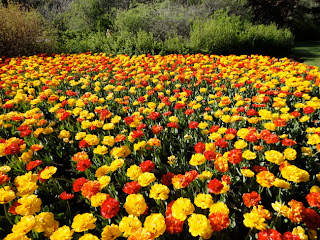Saturday 2 June marks the coronation of Elizabeth II has Queen of Canada and all her other Realms on this year of the Diamond Jubilee. Only one other Monarch in the history of Canada ruled to celebrate her Diamond Jubilee and that was Queen Victoria. Though she was in poor health at the time of her diamond jubilee, the Lords and Members of Parliament had to come to Buckingham Palace to present their best wishes and the Service at St-Paul's Cathedral was held on the steps of the Church because Victoria was to ill to leave her carriage.
Queen Elizabeth is older than Victoria was at the time and in much better health for her own Jubilee. She travelled down Pall Mall to Westminster Abbey to receive in the great hall the messages of both Houses of Parliament. The ceremonial and traditions and the symbolism all around is interesting to observed. It is very similar to Canada.
The Coronation ceremony, you can see it on YouTube with clips from 1953, is a religious ceremony, the Sovereign is anointed by God and the Monarch like a Priest takes vows before God. This is why when the popular press starts talking about abdication it makes no sense whatsoever. One cannot break a contract made with God, its permanent and final. Even if the Queen became ill like King George III or King George V, a Regent or a Council of Regency is named to rule in the name of the Sovereign. But the Monarch cannot resign or abdicate. Just watch the Coronation of 1953 on YouTube and you will understand how this ceremony is more than a President simply swearing an Oath.
The wonderful stain glass window presented to her by both Houses of the British Parliament with her coat of Arms will be mounted in the North window of the Great Hall built almost one thousand years ago by King William II Rufus.
The Parliament in Canada also gave a stain glass window to Her Majesty which will be installed at a later date.
The Canadian window shows profiles of both Queen Victoria and Queen Elizabeth with their Coats of Arms and below the centre block of Parliament as it was at the time of Victoria and the building as it is today. Seen with the Queen is the Speaker of the Canadian Senate and Prince Philip.
To me this Jubilee is important since the Queen is the only Sovereign I have known in my life and because of my Oath of Office the person I promised to serve and represent. During my career I received 3 commissions from her has Consul in Egypt, Mexico and Chicago.
This photo by the celebrated Canadian photographer Yusuf Karsh was taken in 1951, it became for many years the official portrait of the Queen in Canada and appeared on coins, on stamps, in Post Offices and in other public buildings.
A memorable date June 2.
The Queen at Rideau Hall in Ottawa, 2012.
The words that come to my mind when I think of our Sovereign are; Commitment, Dedication, Duty, Service. God Save the Queen!
Queen Elizabeth is older than Victoria was at the time and in much better health for her own Jubilee. She travelled down Pall Mall to Westminster Abbey to receive in the great hall the messages of both Houses of Parliament. The ceremonial and traditions and the symbolism all around is interesting to observed. It is very similar to Canada.
The Coronation ceremony, you can see it on YouTube with clips from 1953, is a religious ceremony, the Sovereign is anointed by God and the Monarch like a Priest takes vows before God. This is why when the popular press starts talking about abdication it makes no sense whatsoever. One cannot break a contract made with God, its permanent and final. Even if the Queen became ill like King George III or King George V, a Regent or a Council of Regency is named to rule in the name of the Sovereign. But the Monarch cannot resign or abdicate. Just watch the Coronation of 1953 on YouTube and you will understand how this ceremony is more than a President simply swearing an Oath.
The wonderful stain glass window presented to her by both Houses of the British Parliament with her coat of Arms will be mounted in the North window of the Great Hall built almost one thousand years ago by King William II Rufus.
The Parliament in Canada also gave a stain glass window to Her Majesty which will be installed at a later date.
The Canadian window shows profiles of both Queen Victoria and Queen Elizabeth with their Coats of Arms and below the centre block of Parliament as it was at the time of Victoria and the building as it is today. Seen with the Queen is the Speaker of the Canadian Senate and Prince Philip.
To me this Jubilee is important since the Queen is the only Sovereign I have known in my life and because of my Oath of Office the person I promised to serve and represent. During my career I received 3 commissions from her has Consul in Egypt, Mexico and Chicago.
This photo by the celebrated Canadian photographer Yusuf Karsh was taken in 1951, it became for many years the official portrait of the Queen in Canada and appeared on coins, on stamps, in Post Offices and in other public buildings.
A memorable date June 2.
The Queen at Rideau Hall in Ottawa, 2012.
The words that come to my mind when I think of our Sovereign are; Commitment, Dedication, Duty, Service. God Save the Queen!
















































